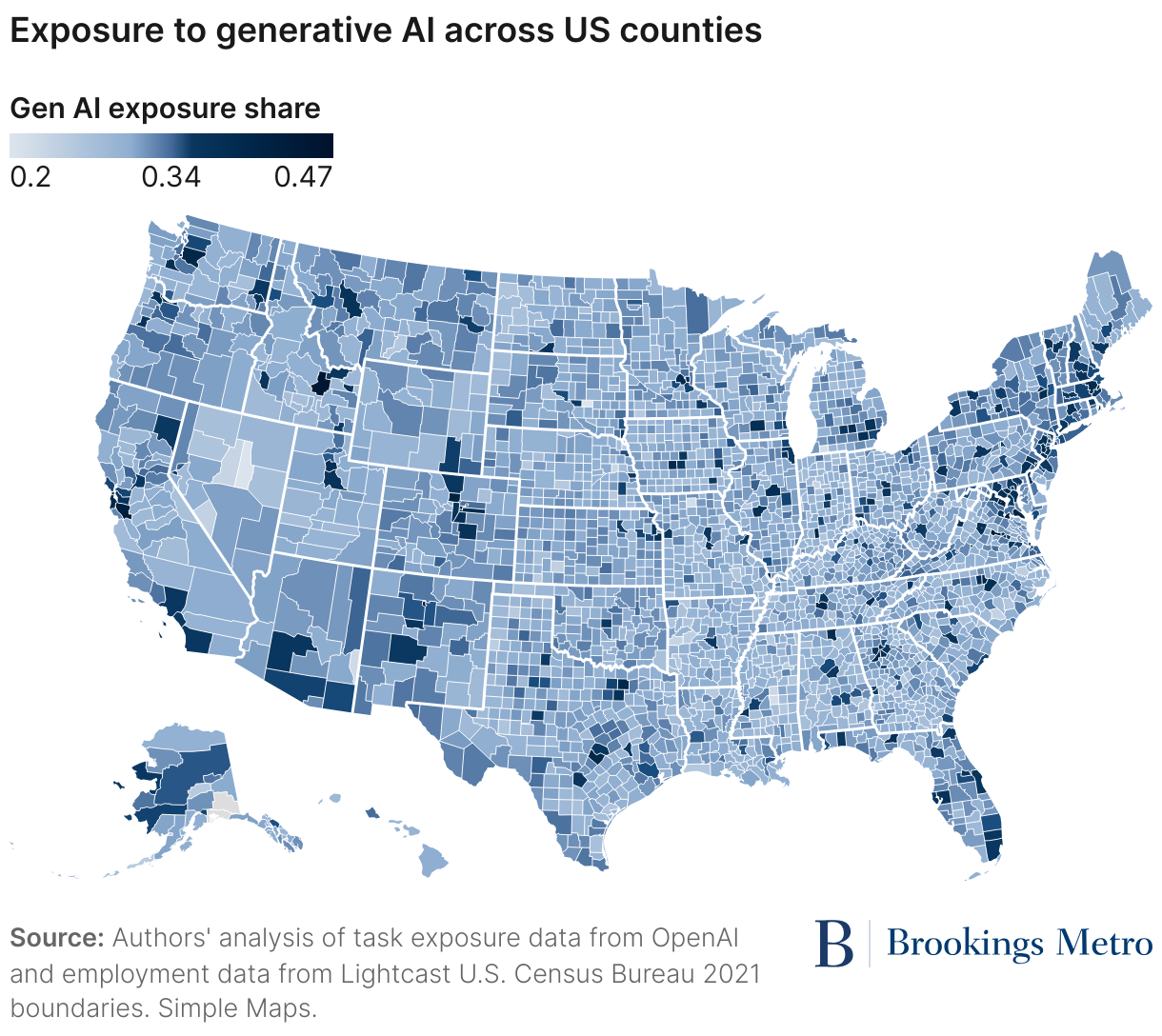Chicago area counties will also see between 35% and 38% exposure. Cuyahoga County in Ohio, home to Cleveland, will see 35% exposure; Columbus’ Franklin County, 36%; Dane County in Wisconsin, which houses Madison and the University of Wisconsin, will see 38% exposure.
Researchers found that the greater the education level or pay for an occupation, the greater its exposure to generative AI tools will be. According to 2023 U.S. Census data, Washtenaw and Oakland counties topped the list of the most educated counties in Michigan.
“Generative AI is especially well suited to the cognitive tasks of white collar knowledge work — think coders, writers, financial analysts, engineers, and lawyers,” the Brookings Metro report states.
Across Michigan, Cass County in Southwest Michigan would see the lowest impact of AI on jobs, with just 22% exposure. Kent County, home to Grand Rapids, will see around 33% exposure to generative AI.
Michigan falls in the middle of the 50 states and the District of Columbia when it comes to generative AI exposure. This can be attributed to the balance between the state’s information-oriented metro areas and lower exposure across its agriculture- and manufacturing-dependent counties.


